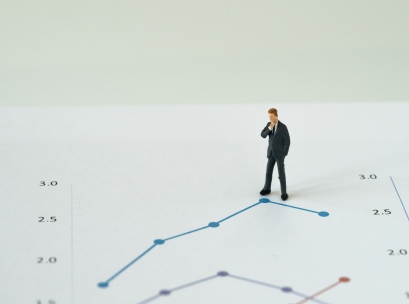 Retail in 2018 has seen yet another year of ups and downs, triumphs and defeats, turnarounds and collapses, though the broader industry has managed to make it through relatively unscathed.
Retail in 2018 has seen yet another year of ups and downs, triumphs and defeats, turnarounds and collapses, though the broader industry has managed to make it through relatively unscathed.
Through the year, however, there have been a few stand-out moments which have largely defined the retail space going into 2019.
- Department stores in downward spiral
Department store Myer’s 2018 was a tale of two chief executives, two turnaround plans, two strikes at the board.
Amid profit downgrades, a particularly difficult annual result (in which the business lost approximately $486 million) and a barrage of calls to dethrone the board from largest shareholder Premier Investments, Myer eliminated 30 executive and senior management roles and began the implementation of it’s “Customer First” turnaround plan.
However, it wasn’t the only one to see a difficult year. David Jones saw a 58.3 per cent drop in operating profit to $45 million in 2018, signalling sector-wide difficulties.
“The department store market in Australia is fundamentally facing a structural change,” Deloitte national retail leader David White told IRW.
“The challenge is that it needs long-term investment, but is under extreme pressure to deliver short-term results…That’s why we’re not seeing the Australian department stores bucking the trend.”
Both retailers have laid out turnaround plans, with David Jones pouring money into its flagship-to-rule-them-all on Elizabeth Street, Sydney, while Myer strategically cuts clearance-zones and refocuses on the in-store experience.
It remains to be seen if either strategy pays off, and White notes 2019 is likely to be another year of difficult decisions for department stores.
- Coles’ independence day
Supermarket giant Coles was spun off by its (now ex) parent company Wesfarmers, becoming an independent business for the first time in 11 years. With approximately 800 supermarkets, 700 service stations and 88 hotels under its belt, the business will take its place as the second-largest food and grocery retailer in Australia.
This fact could make the brand attractive to an international private equity business, according to Queensland University of Technology associate professor Gary Mortimer.
“Being able to get into the Australian market and basically take on the role of the second-largest food retailer in Australia [creates] a very prime target that investors will be looking for,” Mortimer told IRW.
The market price for Coles sat at around $20 billion, which Mortimer notes is a good capital injection for Wesfarmers to invest into other sectors, while also holding a 20 per cent stake in the supermarket and a 50 per cent stake in joint-owned rewards business flybuys.
3.“Bag-rage” sweeps the nation
The supermarket industry in Australia was not immune to controversy during 2018, with the forward-thinking move to cut customers off from receiving single-use plastic bags causing issues for both Coles and Woolworths.
Riling the Australian public with a move towards sustainability, both supermarkets encountered frustrated customers – and in a few cases violence against staff – as a result of the decision.
The ban led to decreased sales for both supermarkets, as well as calls that both brands were actually saving money from the move and passing the cost on to the consumer by asking them to purchase reusable bags after a grace period during which they were handed out for free.
As the Australian public became used to the idea of bringing its own bags, however, sales figures normalised.
- More fall victim to administration
This year was another plagued by businesses voluntarily entering administration: menswear icon Roger David, kids store Toys ‘R’ Us, and US department store chain Sears, to name a few.
Almost universally, these businesses failed to keep up with the rapid pace of change in the retail industry, and, spread across too many locations, struggled with the rising cost of operating many bricks-and-mortar stores.
Deloitte’s White notes that the biggest issue, however, is the lack of investment in the proper systems and processes, while failing to focus on what their customers want.
“If you haven’t got some sort of structural ability to maintain contact with what’s happening in the market you can lose contact and lose relevance pretty damn quickly,” White says.
“There are things you can do to strategise around that but, fundamentally, if you haven’t understood what your customers want it’s very difficult to turn around a failing business.”
These are lessons that can be learned, says IBISWorld senior industry analyst Kim Do.
“Over the next five years, stores will begin shrinking their footprint. Retailers are being a lot more careful about their store locations and will only require a couple of good strategically located stores, while conducting the majority of their business online,” Do says.
“Online stores generally have lower overheads compared with their bricks-and-mortar counterparts and can, therefore, offer consumers more competitive prices.”
- Amazon, one year later
Online giant Amazon, despite the relatively quiet start, achieved quite a lot in 2018, potentially signalling a more considered approach to the Australian business moving forward.
“We’ve seen the expansion of SKUs over select items, the rollout of Amazon Prime, we’ve seen investments in new distribution centres [and] really good, talented people,” Deloitte’s White says.
Although the expectations placed on Amazon’s launch were not realistic, White notes that it still has much to improve on if it is to meet the same bar of quality it offers elsewhere in the world.
“If you look at pricing at the moment, it’s not where it is in other parts of the world,” White explains.
“[Additionally], I’ve not seen as huge a take-up [of Amazon Prime] as maybe they’ve had in other markets, and that is a critical part of the business model.”
While White expects Amazon to expand its services further into Australia over the coming years, he warns not to set unrealistic expectations on the business for 2019.





